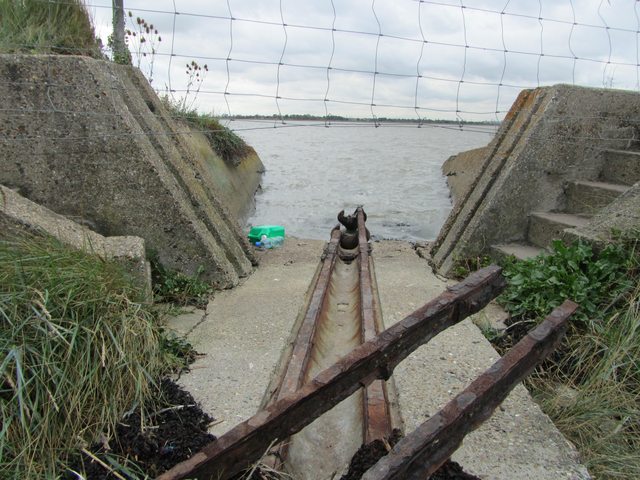History
The Isle of Grain has long been of strategic importance for safeguarding the entrance to the River Medway and the 1860 Royal Commission called for a casemated fort around the existing Grain Tower. However this did not proceed and Grain Fort was constructed as a separate site.
The fort began as a large heptagonal earthwork surrounding a large semi-circular keep. At the front of the fort was a ditch defended by four caponiers. Another inner ditch surrounded the keep and was defended by three caponiers and two demi-caponiers.
As with other forts of the time the upper gun emplacements were connected to the magazines below via shafts. Passages connected the magazines to the caponiers in the front ditch and the keep, which was also accessible via a bridge from the terreplein. The men garrisoned at Grain Fort were barracked in the keep.
Modifications to the fort were made at the end of the 19th century with the addition of four guns with further alterations in the following years through to the end of the Second World War. Grain Fort remained in service until the disbandment of coastal artillery in 1956.














Thanks for looking!!
The Isle of Grain has long been of strategic importance for safeguarding the entrance to the River Medway and the 1860 Royal Commission called for a casemated fort around the existing Grain Tower. However this did not proceed and Grain Fort was constructed as a separate site.
The fort began as a large heptagonal earthwork surrounding a large semi-circular keep. At the front of the fort was a ditch defended by four caponiers. Another inner ditch surrounded the keep and was defended by three caponiers and two demi-caponiers.
As with other forts of the time the upper gun emplacements were connected to the magazines below via shafts. Passages connected the magazines to the caponiers in the front ditch and the keep, which was also accessible via a bridge from the terreplein. The men garrisoned at Grain Fort were barracked in the keep.
Modifications to the fort were made at the end of the 19th century with the addition of four guns with further alterations in the following years through to the end of the Second World War. Grain Fort remained in service until the disbandment of coastal artillery in 1956.














Thanks for looking!!



